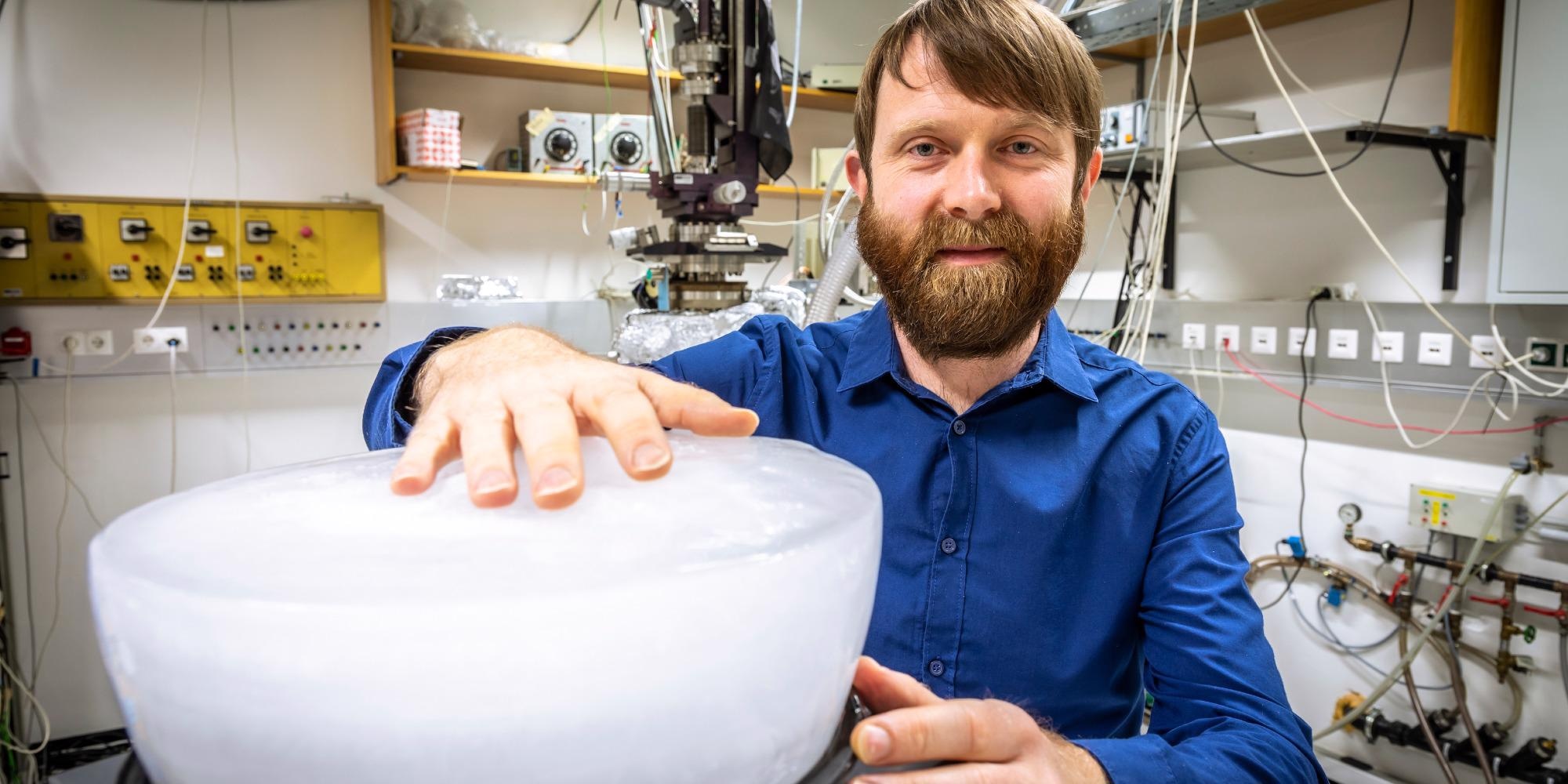May 28 2021
When water comes into contact with a cold surface, it freezes and changes into ice—a fact that is already well known.
 The study results of Anton Tamtögl et al. lead to a completely new understanding of ice formation: Water molecules require additional energy before they freeze into ice. Image Credit: © Lunghammer - Graz University of Technology.
The study results of Anton Tamtögl et al. lead to a completely new understanding of ice formation: Water molecules require additional energy before they freeze into ice. Image Credit: © Lunghammer - Graz University of Technology.
However, the actual process and its minute details have remained vague, until now.
The first step in ice formation is called ‘nucleation’ and happens in an incredibly short length of time, a fraction of a billionth of a second, when highly mobile individual water molecules ‘find each other’ and coalesce.
Anton Tamtögl, Institute of Experimental Physics, Graz University of Technology
Traditional microscopes are relatively slow to monitor the movement of water molecules, and hence, it is not possible to apply them to “watch” the way molecules accumulate on top of the surfaces of solids.
Findings Turn Previous Understanding of Ice Formation Upside Down
Using computational simulations and a new experimental method, Tamtögl and a research team from the University of Cambridge and the University of Surrey successfully tracked down the initial step of ice formation on the surface of graphene.
The researchers made an incredible observation that water molecules tend to repel one another and must acquire adequate energy to overcome this repulsion before ice begins to form; in other words, it should become hot before the formation of ice. The study was published in the Nature Communications journal.
Speaking in the general sense, the lead author of the study Anton Tamtögl stated, “repulsion between water molecules has simply not been considered during ice nucleation—this work will change all that.”
Following the “Dance” of Water Molecules
The researchers discovered this effect by using a technique known as Helium Spin-Echo (HeSE)—a method devised at the Cavendish Laboratory in Cambridge and particularly developed to track down the movement of molecules and atoms.
The machine disperses helium from the moving molecules on a surface, just like the way radio waves disperse from vehicles in a radar speed-trap. It records the number of dispersed helium and its velocity/energy after scattering and thus helps track the motion of molecules and atoms.
The HeSE experiments demonstrated that water molecules on the surface of graphene, that is, an individual atomic layer of carbon, repel one another. This repulsion occurs because of the same molecular alignment, perpendicular to the surface.
The situation is similar to bringing a pair of magnets with like poles together: They will force themselves apart. To trigger the nucleation of ice, one of the two molecules should reorient itself, and only then can they reach close to one another. But this kind of reorientation needs more energy and, hence, represents a limitation that should be resolved to ensure the growth of ice crystals.
The experimental findings were confirmed by computational simulations, where the accurate energy of water molecules in various configurations was plotted and the interactions between molecules close to one another were estimated.
Simulations also make it possible to “switch” the repulsion on and off, thus offering more evidence of the effect. The combination of both theoretical and experimental techniques enabled international scientific researchers to reveal the behavior of the water molecules.
For the first time, this method precisely captures how the initial step of ice formation at the surface evolves, and this eventually enabled the team to suggest a formerly unfamiliar physical mechanism.
Relevance for Other Fields and Applications
The researchers also proposed that the recently observed effect may take place more extensively on other kinds of surfaces.
“Our findings pave the way for new strategies to control ice formation or prevent icing,” added Tamtögl, thinking, for instance, of surface treatments particularly for telecommunications, aviation, or wind power.
Interpreting the microscopic processes at work at the time of ice formation is also crucial to estimate the melting and formation of ice, from separate crystals to glaciers and ice sheets. In this case, the latter is significant to one’s ability to measure environmental transformation in relation to global warming and climate change.
The study has been archived in the Field of Expertise “Advanced Materials Science,” which is one of the five research foci of Graz University of Technology.
Journal Reference:
Tamtög, A., et al. (2021) Motion of water monomers reveals a kinetic barrier to ice nucleation on graphene. Nature Communications. doi.org/10.1038/s41467-021-23226-5.
Source: https://www.tugraz.at/en/